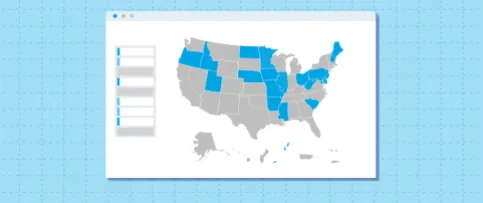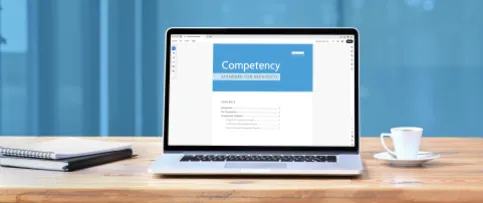The road to licensure can be long—and sometimes filled with detours. That’s why we created new opportunities for individuals who can no longer earn an architecture license through the traditional path. One of these options is the Architectural Experience Program™ (AXP™) Portfolio, which allows experienced designers to satisfy the AXP’s requirements by completing an online portfolio.
Through the AXP Portfolio, unlicensed individuals can document experience that falls outside of the reporting requirement by uploading work examples that satisfy the program’s 96 tasks. This option is designed solely for experienced designers who have at least two years of experience that is older than five years. Applicants who complete the AXP Portfolio must still complete their jurisdiction’s education and examination requirements to earn a license.
To help potential applicants understand the portfolio process, we asked Rafael Enriquez—who recently completed the AXP Portfolio—to share his advice for navigating this new opportunity.
Why is earning a license important to you?
Professionally, having a license will help me progress in my career. Personally, I feel that all the hard work of finishing school and working in the field warrants you going the final steps to be able to be called an architect.
You recently completed the AXP through the new portfolio option—what did you think of the portfolio process?
I am so thankful for the AXP portfolio option. I can’t earn all the required experience in my current job, and I didn’t log my past experience when I worked in architecture firms—even though I worked more than the required experience. Completing the experience requirement through the AXP Portfolio is the only reason that I was able to finally begin taking my exams. As a result, I am half way through taking the Architect Registration Examination® (ARE®) 5.0 divisions.
However, it can be difficult to find all the different types of documents and work examples that are required to complete the portfolio option. As work becomes more and more digital, it should be easier to have that documentation readily available. But even then, there are some items—like contracts and billing data—that emerging professionals and young designers are probably not exposed to until later in their careers.
What advice would you give other candidates completing their experience requirement through the portfolio?
Document, document, document! Ask permission when leaving a job to take a copy of the documentation required for each task listed in the experience requirements. Organize all your documents. You will be so thankful when it comes time to upload your work to the portfolio if you have all the data saved in organized folders that align with the AXP requirements.
How did you hear about the AXP Portfolio?
I constantly checked the NCARB website to research how much experience I would be able to amass at my current job. I was weighing my options, which included going to work in the private sector again and gaining the required experience so I could take the ARE and become licensed.
You’re in the middle of taking the ARE. Do you have any study tips?
Don’t wait too long between divisions—it helps keep the momentum going if you test again while you are still in the studying mode. For me, one month (40-60 hours of studying) between tests was enough for Practice Management, Project Management, and Construction & Evaluation, which all had considerable content overlap. Use the list of resources in the ARE 5.0 Handbook and the example questions as your guideposts to organize you study plan. Third-party visual study guides seem to be more beneficial for the other three divisions (Programming & Analysis, Project Planning & Design, and Project Development & Documentation) that cover a broader scope.
Find out of you’re eligible for the AXP Portfolio.
Rafael Enriquez is a community planner for the Asset Management Branch of the Naval Facilities Engineering Command Southwest and is currently taking the ARE.



